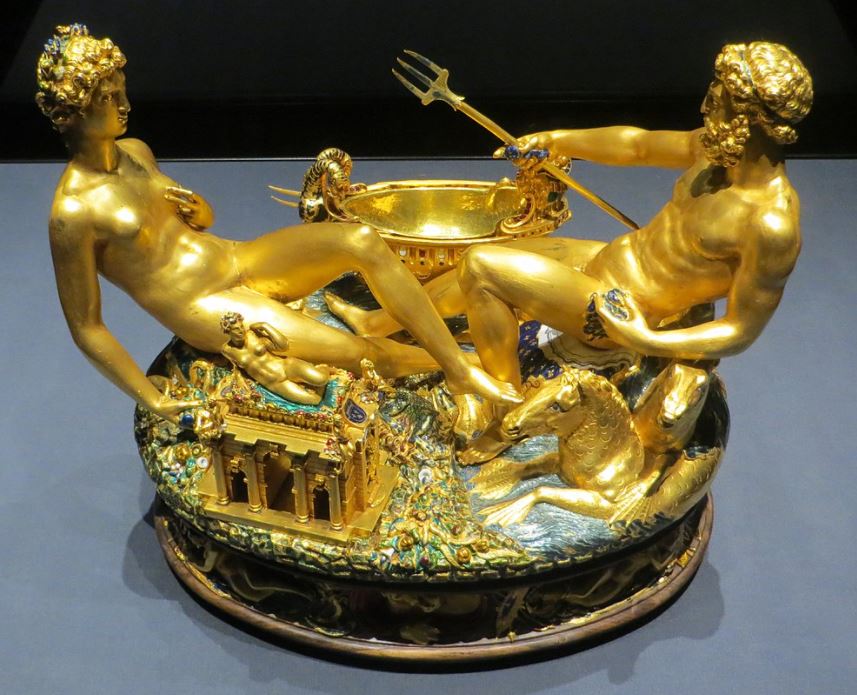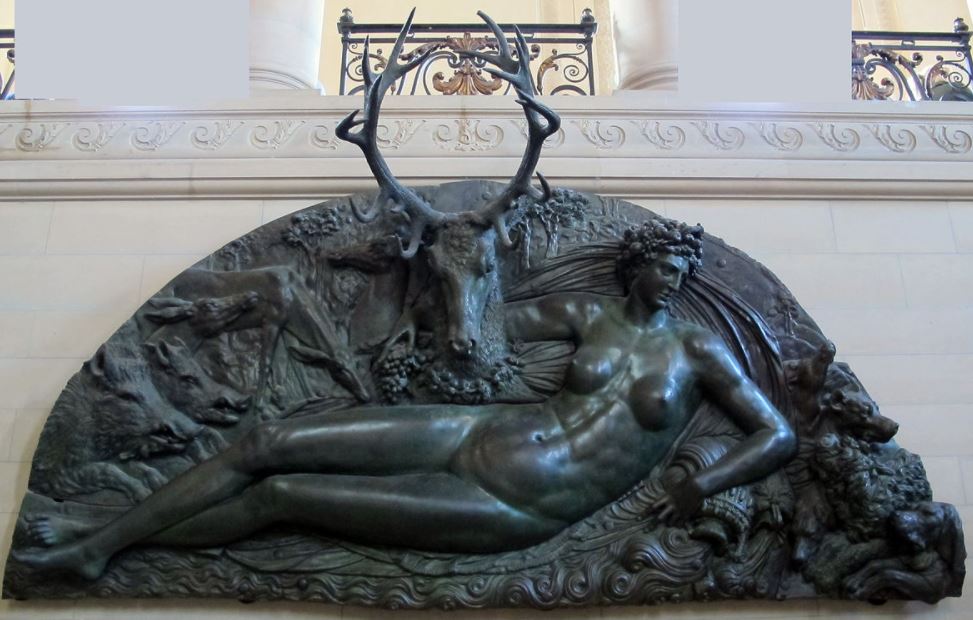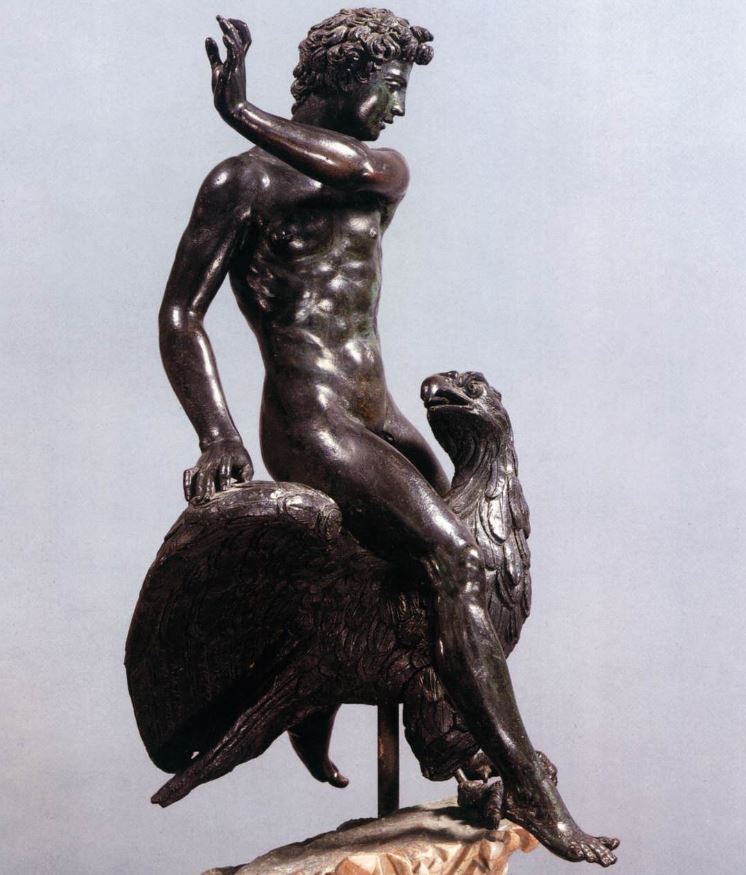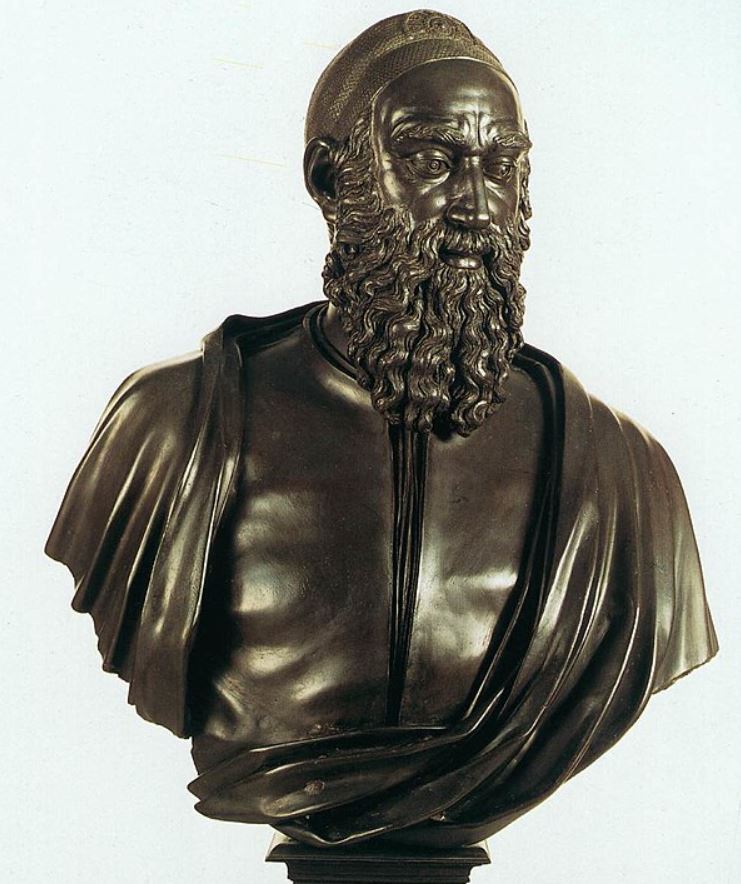Born and raised in Florence, Italy, Benvenuto Cellini (1500-1571) became one of the most renowned Mannerist artists in history. He was prolific as a draftsman, sculptor, goldsmith, poet, and also wrote an autobiography.
Even though he traveled all across Italy during his career, he was commemorated in his hometown with a bust on the most iconic bridge in the city, the Ponte Vecchio, in 1900. This was a gift from the local goldsmiths to honor his 400th birth anniversary.
In this article, we take a closer look at some of the most famous Benvenuto Cellini artworks so you can get a clear view of the remarkable talent of this 16th-century artist.
1. Perseus with the Head of Medusa
- Date Created: 1545-1554
- Dimensions: 519 centimeters (204.33 inches) (including base)
- Location: Loggia dei Lanzi, Florence, Italy
Perseus with the Head of Medusa is arguably one of the most famous Benvenuto Cellini artworks and depicts the mythical story of Perseus and Andromeda. It depicts the moment shortly after Perseus beheaded Medusa, a gorgon who turned people to stone just by looking at them. Perseus also stands triumphantly on top of the headless body of Medusa.
The Florentine Duke commissioned the bronze sculpture, Duke Cosimo I de’ Medici and unveiled it to the public after 9 years of work on April 27, 1554. The work now decorates one of the most fascinating structures in the center of Florence, Italy, called the Loggia dei Lanzi, situated on the corner of the Piazza della Signoria, the historical heart of the city.

2. Cellini Salt Cellar
- Date Created: 1543
- Dimensions: 26 × 33.5 centimeters (10 × 13.2 inches)
- Location: Kunsthistorisches Museum, Vienna, Austria
Cellini was equally proficient in the creation of monumental as in creating little delicate works of art. This is especially clear with his work called the “Cellini Salt Cellar,” a Partly enameled gold sculpture that he completed as a commission for King Francis I of France in the 1540s.
It’s a remarkable work of art and unique as well because it’s the only work of precious metal that was certainly created by Cellini, quite something for a man also described as a goldsmith. This work of art is an allegorical representation of Land and Sea and can now be admired in Austria’s largest art museum, the Kunsthistorisches Museum in Vienna.

3. Nymph of Fontainebleau
- Date Created: 1543
- Dimensions: 205 x 409 centimeters (80.7 x 161.02 inches)
- Location: Louvre Museum, Paris, France
The Nymph of Fontainebleau is a huge bronze relief that is also sometimes referred to as the “Nymph of Anet” or the “Nymph with the Stag.” It was originally created to decorate the Château de Fontainebleau, one of the most amazing French royal Chateaux which is situated just southeast of Paris.
The relief depicts a naked reclining female with several wild animals such as a stag, wild bores, and dogs. It was never really placed in the location where it was commissioned for, the “Golden Gate” of the Chateau de Fontainebleau, but was instead placed above the entrance ate of another castle named the “Château d’Anet.”

4. Ganymede
- Date Created: 1548-1550
- Dimensions: 60 centimeters (23.62 inches)
- Location: National Museum of Bargello, Florence, Italy
The sculpture of Ganymede depicts the son of Tros, one of the legendary kings of Troy. The youthful-looking man was so attractive that Jupiter fell in love with him, transformed into an eagle, and flew him to Mount Olympus.
Even though this sculpture has been attributed to Cellini, he didn’t mention it in his autobiography, making this attribution uncertain. It has been attributed to the artist based on the style in which it was sculpted which was similar to that of Cellini at the time.

5. Crucifix
- Date Created: 1562
- Dimensions: 185 centimeters (72.83 inches)
- Location: El Escorial, Madrid, Spain
Crucifix by Cellini was created by the artist in the latter years of his life and he intended to place it in the Santa Maria Novella in Florence to decorate his tomb. Because the Dominicans who ran the church disagreed this never happened and he ended up selling the sculpture to Cosimo I de’ Medici, Grand Duke of Florence.
Cosimo planned to have this sculpture placed in his private chapel at the Palazzo Pitti in Florence, but this never happened either because he died in 1574. His successor, Francesco I de’ Medici, eventually sent this amazing version of the Crucifixion of Jesus Christ to King Philip II of Spain who placed it in El Escorial just outside of Madrid, a location it still resides today.

6. Bust of Bindo Altoviti
- Date Created: 1549
- Dimensions: 105 centimeters (41.33 inches)
- Location: Isabella Stewart Gardner Museum, Boston, United States
The Bust of Bindo Altoviti depicts a friend of Benvenuto Cellini, rich Florentine banker Bindo Altoviti. Even though he was born in Florence, he made his name in Rome and became a friend of multiple of the most famous Renaissance artists working there at the time.
His list of friends included Raphael, Michelangelo, Cellini, and Vasari, and his wealth also allowed him to become a patron of the arts during his time in Rome, similar to his ally, Pope Julius II. This remarkable bust is no in the collection of the Isabella Stewart Gardner Museum in Boston in the United States.



